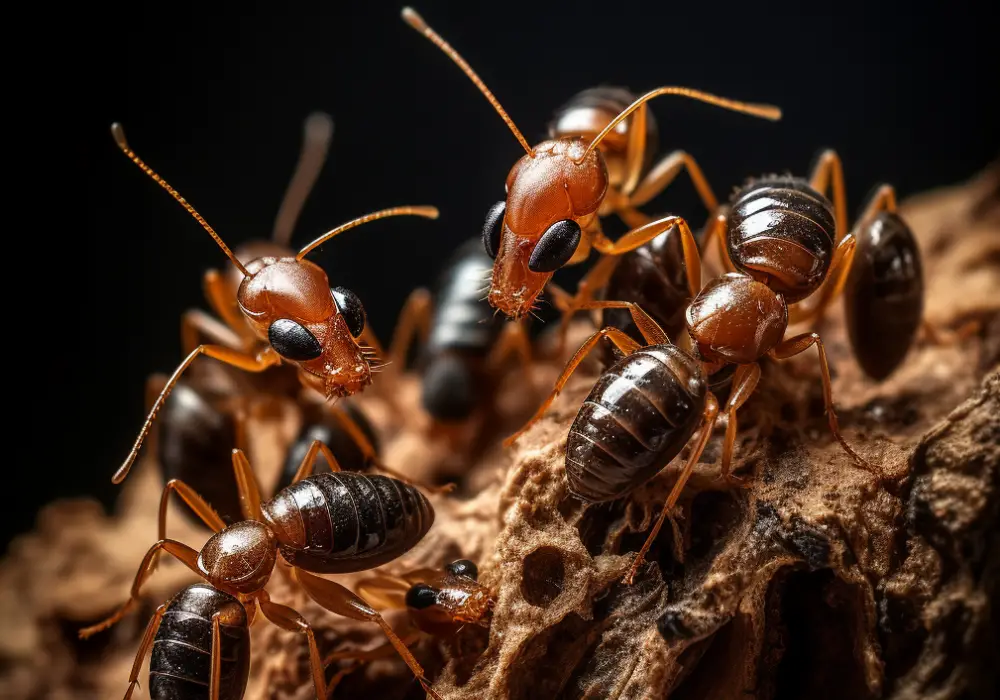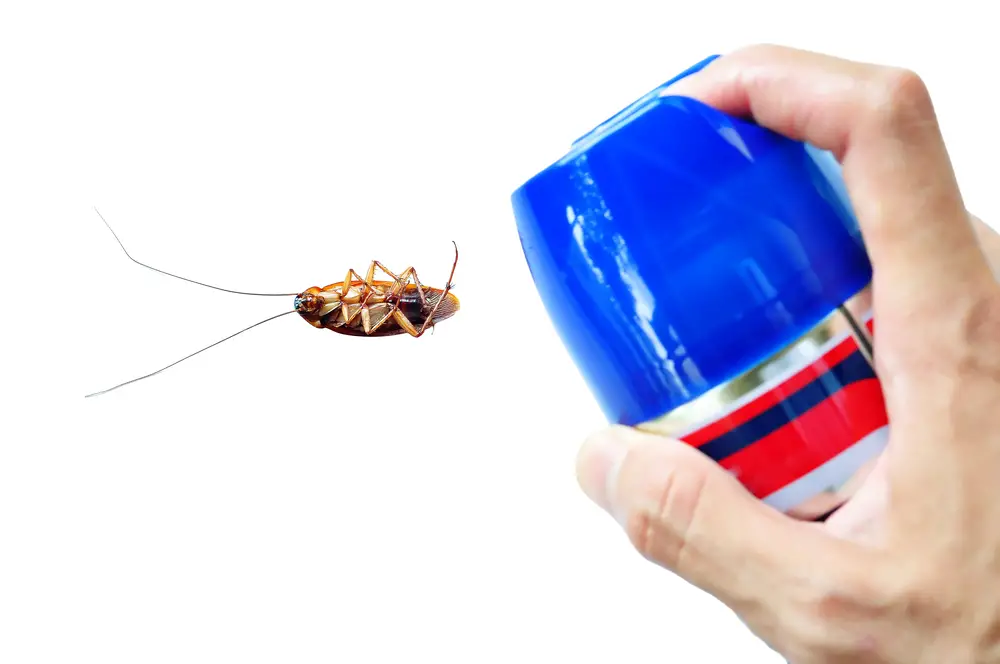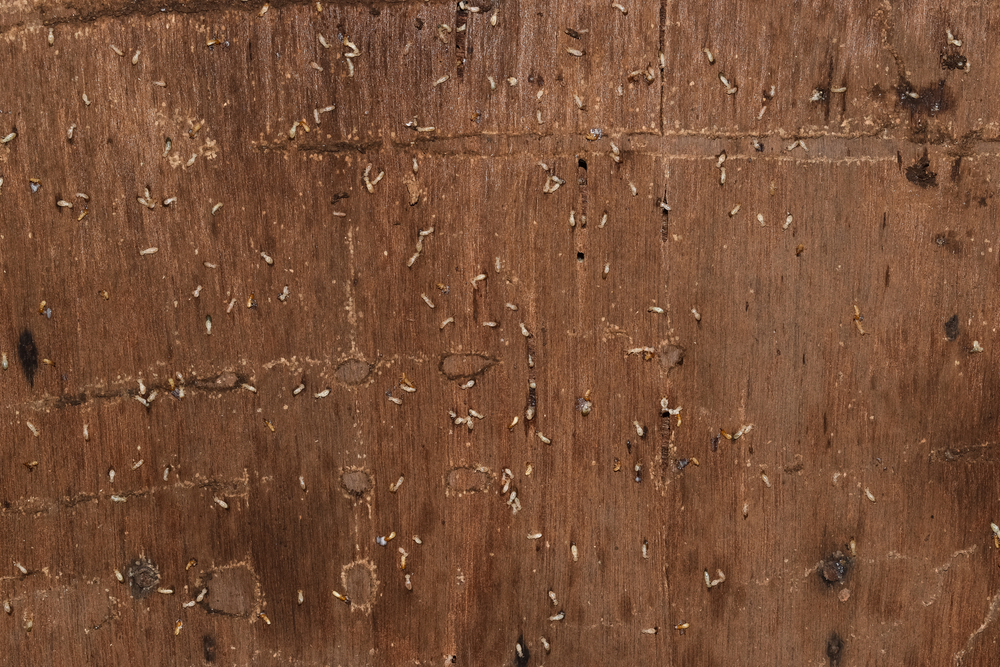Wood mites and termites are often mistaken for each other due to their similar appearance and wood-dwelling habits.
However, they are distinct creatures with noteworthy differences.
Wood mites, also known as woodlice, belong to the crustacean family and primarily feed on decaying organic matter.
Termites, on the other hand, are wood-feeding insects that can cause significant damage to homes and buildings if left unchecked.
Wood Mites: A Brief Overview
Wood mites are tiny arachnids that can infest various areas of your home, including furniture, carpets, and wood structures. They are often mistaken for termites, but wood mites differ in several significant ways.
Firstly, wood mites feed on mold and fungi, which thrive in moist environments. Therefore, the presence of wood mites can indicate excessive moisture in the vicinity.
Wood mites do not eat wood as termites do. Instead, they feed on mold spores and fungal growth. Moisture control is crucial in preventing wood mite infestations, as eliminating excess moisture will deprive them of their primary food source.
In some cases, wood mites can cause allergies, as they produce waste, known as frass, which contains allergens. People sensitive to allergies may experience reactions when exposed to these allergens.
One effective prevention method for wood mite infestations includes regular vacuuming, which reduces mold and spores in your living areas. Additionally, using dehumidifiers or proper ventilation systems can maintain proper humidity levels, ultimately preventing the growth of molds and fungi.
Although wood mites do not bite humans, their presence may lead to an increase in other pests, such as spider mites. In more severe infestations, insecticides can be applied to affected areas.
For a more natural solution, borax is a useful alternative to eliminate insects. However, addressing the root cause of the problem, such as excess moisture, is the best long-term solution.
Understanding Termites

Termites are social insects that mainly feed on wood and other cellulose materials. They are typically found in moist environments and can cause significant structural damage to buildings, trees, and furniture if not detected and managed early.
There are three types of termites generally encountered: subterranean, drywood, and Formosan. Subterranean termites live underground and construct mud tubes to search for food above ground.
They are the most common and can be found mostly in areas where moisture is abundant. Drywood termites, on the other hand, do not need soil contact and can infest structures directly.
Formosan termites, a species of subterranean termites, are known for their aggressive behavior and can cause severe structural damage within a short period.
Termite infestations may be identified by several signs. These include the presence of mud tubes connecting the ground to the infested wood, discarded wings from reproductive termites, and visible wood damage such as wet rot, dry rot, or wood rot.
When termites feed on wood, they create a maze-like pattern inside, which weakens the structure. In addition, termites might also be found in firewood piles, trees, or damaged furniture within your property.
To prevent or mitigate termite activity, it’s essential to eliminate sources of moisture like leaks, repair any cracks in the foundation, and maintain a safe distance between lumber and soil.
The EPA recommends using bait stations to monitor and manage termite colonies. Baits are strategically placed around the property, allowing termites to ingest the toxic material and transfer it to the other members of their colony, including the king and queen, workers, and soldiers.
Upon detecting an infestation, it is crucial to consult a pest control professional who can accurately assess the situation and develop an appropriate plan to eradicate the colony.
It is important to note that utilities like plumbing and electrical systems might be affected by termite damage, which adds to the importance of maintaining regular inspections for any signs of activity.
Comparing Wood Mites and Termites
Wood mites and termites are two distinct groups of arthropods that share some similarities. However, they also have notable differences in their biology, behavior, and impact on humans.
Similarities
Both wood mites and termites are small arthropods that can be found near or on wood structures. They are generally social creatures living in colonies that work together to achieve their goals, such as the search for food.
Being arthropods, they possess an exoskeleton and jointed legs, which are common characteristics of this large group of invertebrates.
Wood Mites
Wood mites, also known as barklice (Psocoptera), are harmless insects that can be found on tree bark or wooden surfaces. They typically measure 1-5 millimeters in length and have soft bodies, wings, and long antennae. Wood mites feed on fungi, algae, or lichens found on the surface of wood.
Their presence in and around homes does not indicate structural damage, as they do not consume the wood itself. In most cases, wood mites are merely a nuisance rather than a threat to property or human health.
Termites
Termites (Isoptera) are insects that can cause significant structural damage due to their wood-consuming habits. They are generally 4-15 millimeters in length and come in various forms, including workers, soldiers, and reproductive castes.
Unlike wood mites, termites have specialized mouthparts designed for chewing and breaking down wood into a substance called cellulose. They also form large colonies within infested wood structures and use this food source to support their rapidly growing populations.
Termites can be categorized into two main types: subterranean and drywood.
Subterranean termites require contact with soil and build mud tubes to access wooden structures above ground, while drywood termites infest wood directly and do not require contact with soil. Left unchecked, a termite infestation can lead to property damage and costly repairs.
Spotting the Signs of Wood Mite and Termite Infestation

Wood mites and termites are both common pests that can infest wooden structures. It’s important to be able to spot the signs of infestation, as early detection could save your furniture and structures from severe damage.
It’s crucial to know the differences between wood mite and termite infestations. Wood mites are known to cause wood rot and discoloration. They thrive in moist environments and feed on cellulose found in wood.
Look for small cracks in the wood where they tend to hide. Evidence of wood mite infestation can include a musty smell and a yellowish-brown discoloration on wood surfaces. The wood may also feel soft and spongy to the touch.
On the other hand, termites are notorious for causing significant structural damage to wooden structures, as they also feed on cellulose found in wood.
Signs of a termite infestation are different than those of wood mites and may include:
- Mud tubes, which are thin tunnels made of soil and termite waste, are found on walls, ceilings, and floors.
- Termite wings are often discarded near windows and doors, indicating swarmers have recently left the nest to find a mate and establish a new colony.
- Frass, a mixture of wood particles and termite waste, is found near damaged wood.
- A hollow sound when tapping on wood beams or furniture, which may indicate termite damage inside.
Unlike wood mites, termites do not cause discoloration in the wood, but their damage may result in wood appearing sunken or developing cracks.
The most reliable method to differentiate between wood rot and termite damage is through inspection.
With wood rot, the wood will be deeply grooved and appear decayed. In contrast, termite damage will cause the wood to appear layered and hollowed out, with the presence of mud tubes in severe cases.
Store firewood at least 20 feet from your home and use well-ventilated storage spaces for wooden items.
Professional Pest Control Measures
When dealing with infestations of wood mites or termites, it is often necessary to involve a pest control professional. These experts possess the essential tools and training to handle these pests effectively and ensure the problem is resolved completely.
A pest control professional may choose to use various treatments in order to combat wood mites and termites.
- Cannot be shipped to New York
- Protection against subterranean termites, drywood termites, Formosan termites, wood destroying beetles and decay fungi.
- # No more scheduling hassles – No need to leave home during treatments # Eliminates weather delays
One such treatment includes boric acid, which acts as a stomach poison for these insects and kills them upon ingestion. Spray, dust, or bait formulations containing boric acid can be applied to the infested areas, providing a highly effective, low-toxicity solution.
Another method of pest control employed by professionals is the use of nematodes. These are microscopic, worm-like organisms that are used as biological control agents against termites.
They work by infecting and eventually killing the insects, thus reducing their population in the infested area. Nematodes are a natural option with minimal environmental impact, as they specifically target termites and do not harm other organisms.
In some cases, more aggressive chemical treatments may be required to tackle serious infestations. Pesticides such as termiticides are used to kill termites, while other chemicals specifically target wood mites.
Pest control professionals are trained to handle and apply these toxic chemicals safely and effectively, ensuring minimal risk to humans and the environment.
In addition to chemical treatments, pest control professionals might use borate products to treat infestations.
Borate is a chemical compound derived from boron, which effectively kills both wood mites and termites. It acts as a slow-acting stomach poison and can be applied as a liquid, powder, or foam to the affected areas, offering long-lasting protection once absorbed into the wood.
DIY Treatment and Prevention Strategies

Preventing wood mites and termites from infesting your home is a crucial step in maintaining the integrity and appearance of wood structures. To achieve this, one can adopt various strategies that involve both physical and chemical methods.
First and foremost, addressing water damage and drainage issues is an essential preventive measure. Ensure that gutters and downspouts are functioning effectively to redirect water away from your home’s foundation.
Regularly inspect and repair any leaks or water damage to prevent high humidity levels that attract wood-destroying pests.
Maintain a clean and well-kept garden by trimming back shrubs, removing dead branches, and disposing of wood debris. This not only helps to deter wood mites but also creates an unwelcoming environment for termites.
Installing a physical barrier, such as steel mesh, can help prevent termites from entering your home. Additionally, applying wood treatments like sealants or paints creates an extra layer of protection against wood mites and termites.
Implementing biological control agents, like nematodes, is an environmentally friendly way to eradicate termites.
These microscopic worms can be placed in areas with termite activity, effectively killing the pests with minimal ecological impact. Sands can also be utilized as a physical barrier to prevent termites from traveling between soil and wood structures.
In case of an existing infestation, using baits and pesticides can help control the pests. Baits containing slow-acting pesticides can be strategically placed for termites to consume and share with their colony, eventually killing off the entire population.
For wood mites, vacuuming and the use of a dehumidifier can help reduce their presence and discourage their return.
Given that some pesticides may cause allergic reactions, it is essential to handle these chemicals with care and strictly follow the manufacturer’s instructions. Always consider legal regulations regarding pesticide use and avoid using chemicals that may harm the environment or other beneficial organisms.
Health Risks Associated with Wood Mites and Termites
Wood mites and termites are commonly known for the damage they cause to wooden structures. However, they can also pose health risks to humans.
Although these insects are not directly harmful like other pests, such as mosquitoes, they can still contribute to problems, particularly for people with allergies or respiratory issues.
Termites are not known to cause allergic reactions directly, but their presence may indicate mold growth. When termites feed on wood, they create moisture, which can lead to mold development. Mold spores are common allergens, potentially causing sneezing, itching, and respiratory issues in susceptible individuals.
On the other hand, wood mites, particularly dust mites, are notorious for triggering allergic reactions. These microscopic creatures feed on dead skin cells and other organic material found in indoor environments.
Dust mite allergens are proteins present in their fecal matter and decomposing bodies.
Common symptoms associated with mite allergies include:
- Sneezing
- Itchy or watery eyes
- Runny or stuffy nose
- Difficulty breathing
- Asthma exacerbations
Mitigating the health risks posed by wood mites and termites involves maintaining a clean and well-ventilated environment. Regularly cleaning with a HEPA filter vacuum and using air purifiers with HEPA filters can help reduce allergens in the air.
Moreover, reducing humidity levels can limit conducive conditions for dust mite growth and prevent mold development. To control termite infestations, regular inspections and timely treatment by pest control professionals are key measures to adopt.






